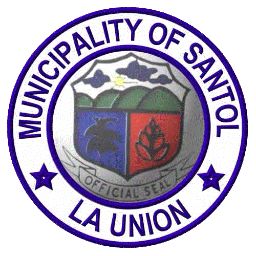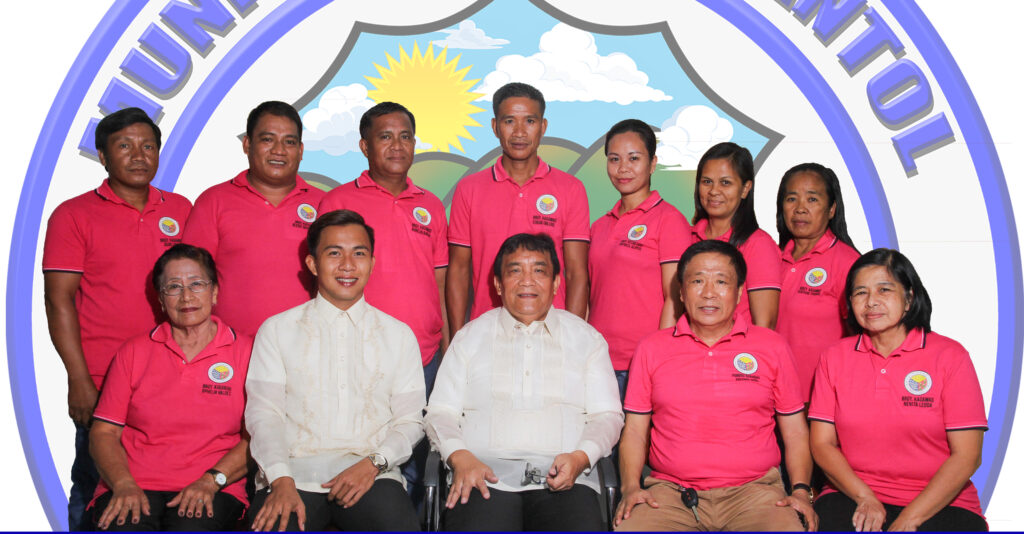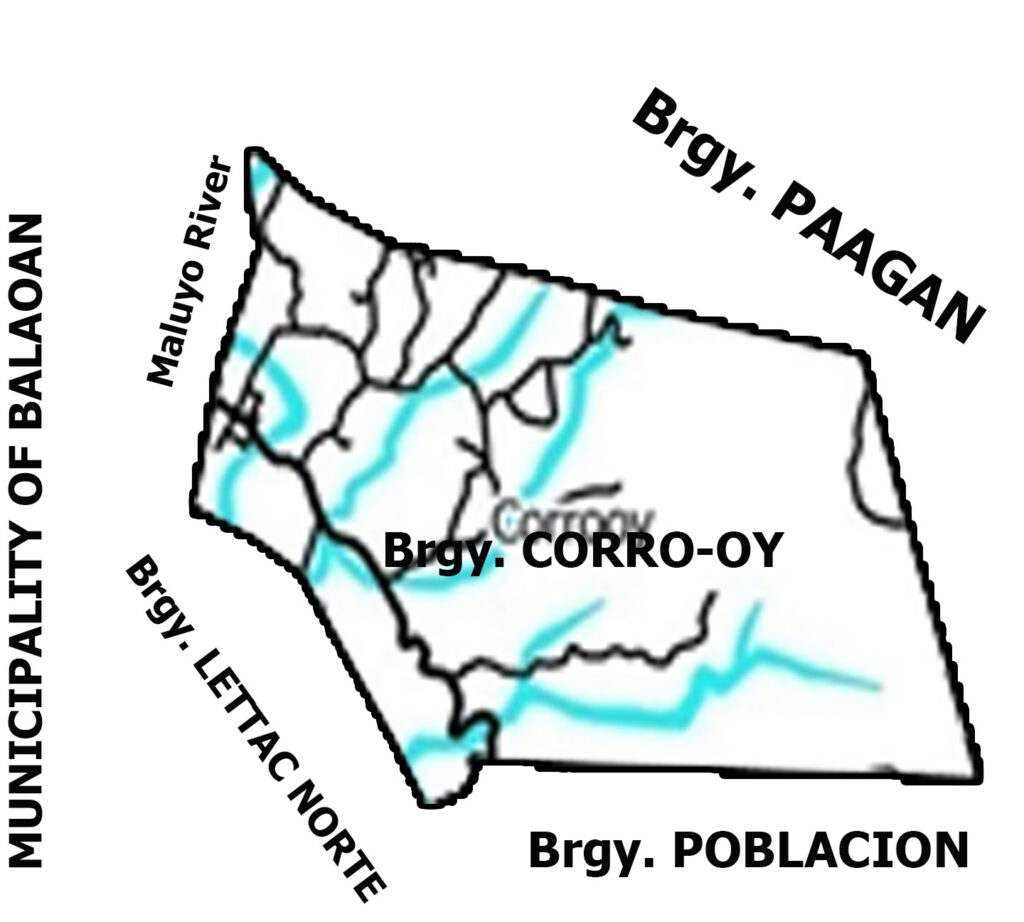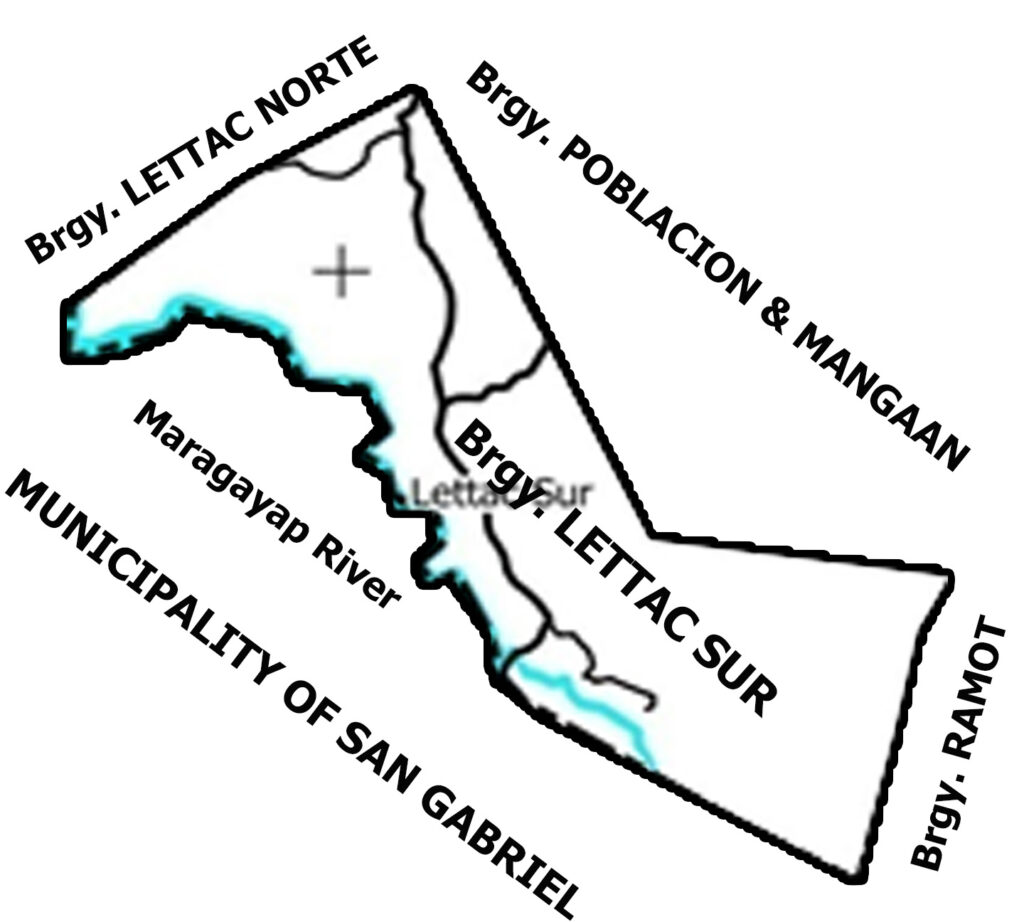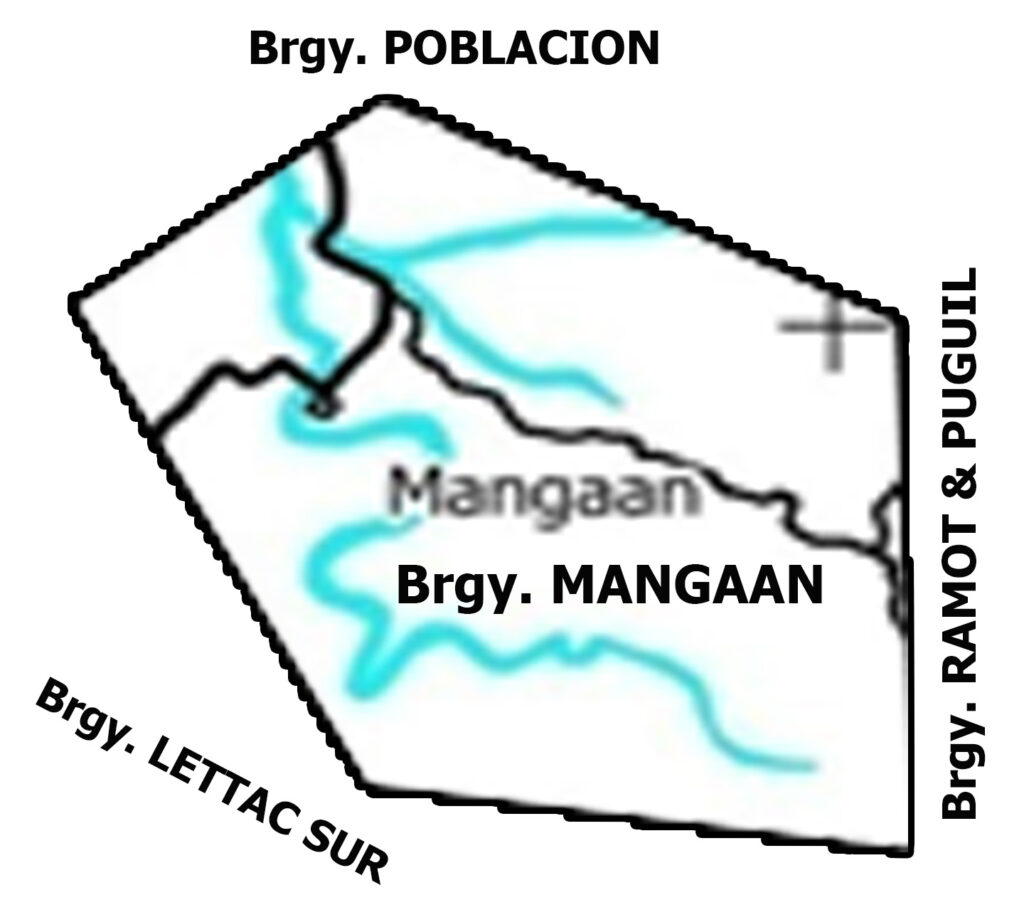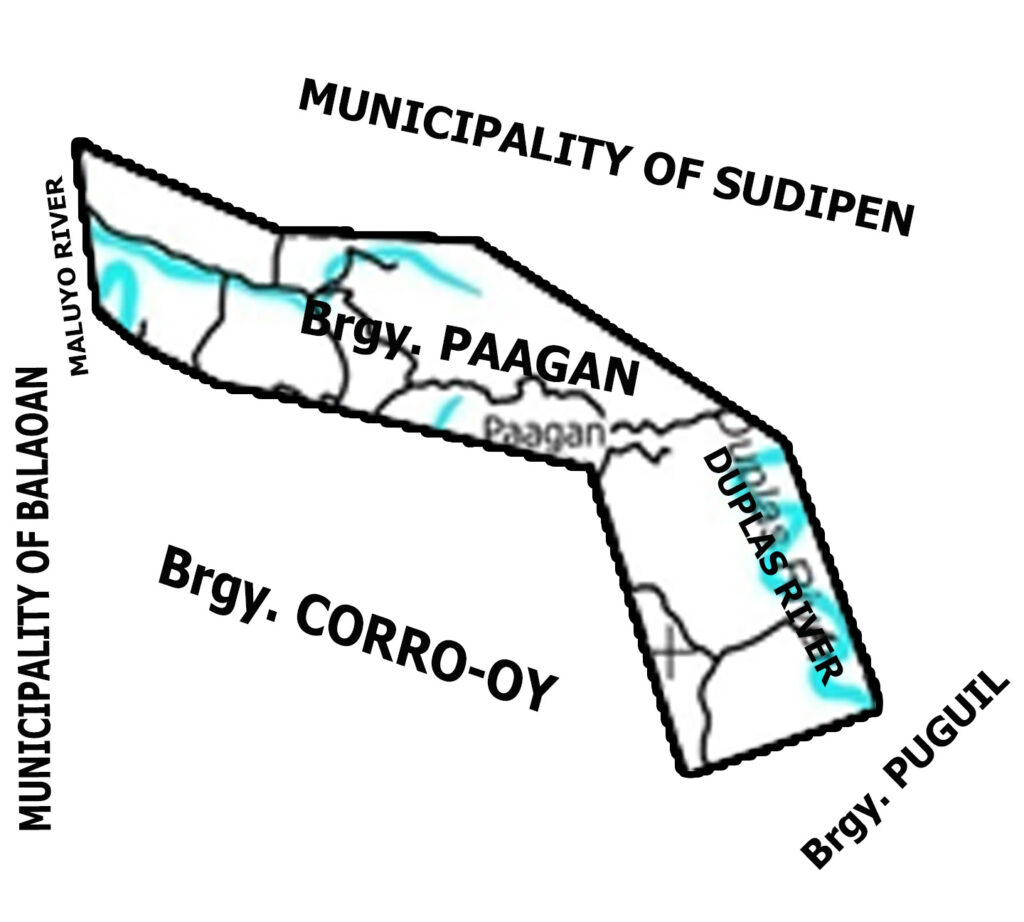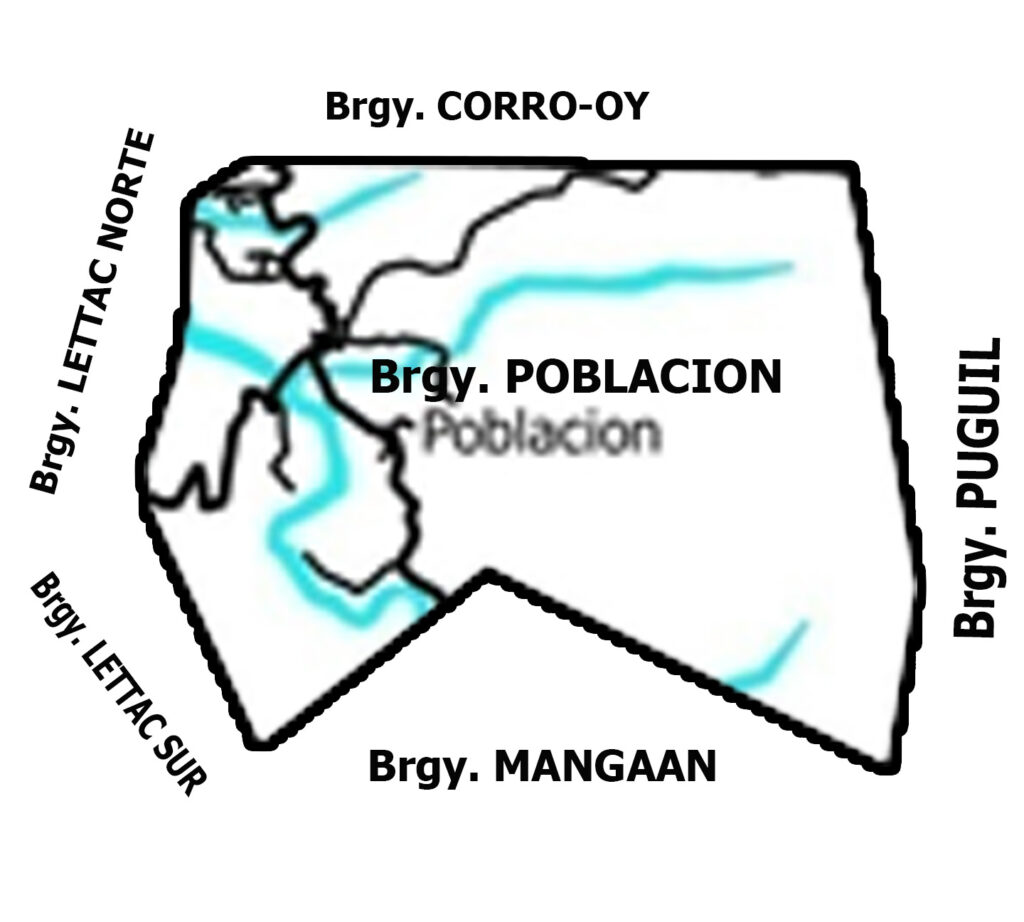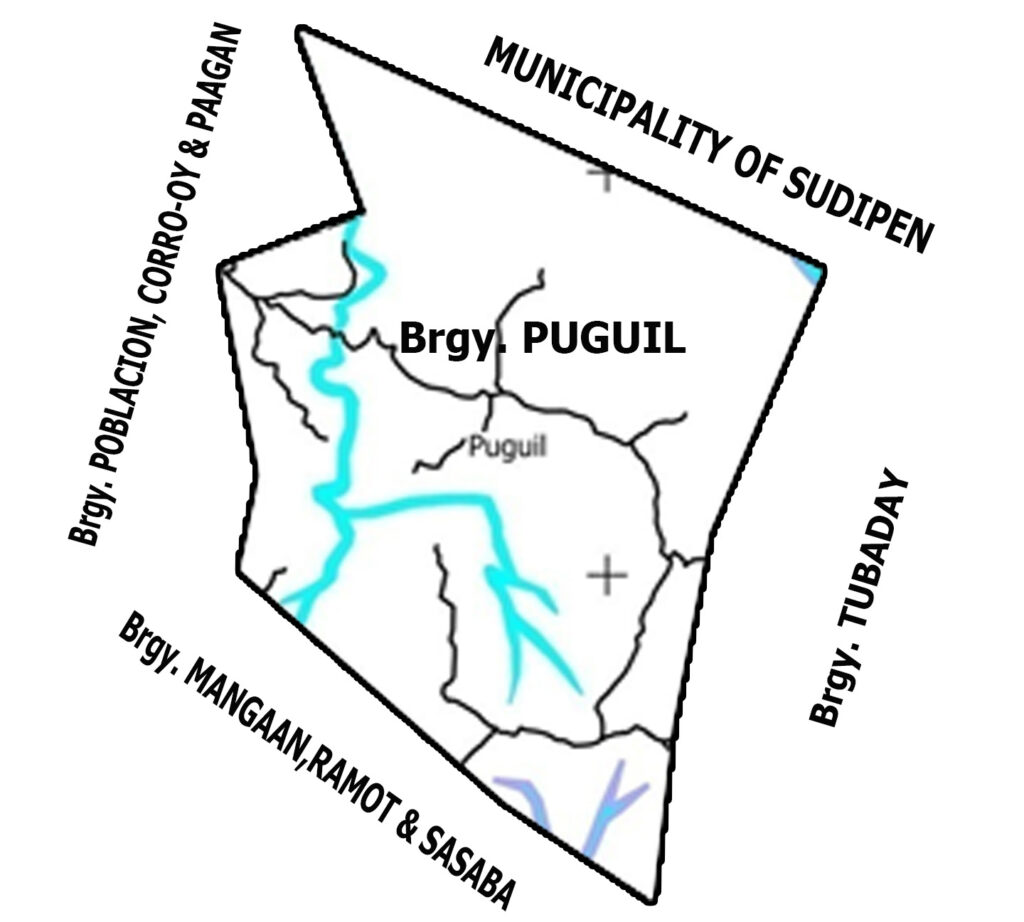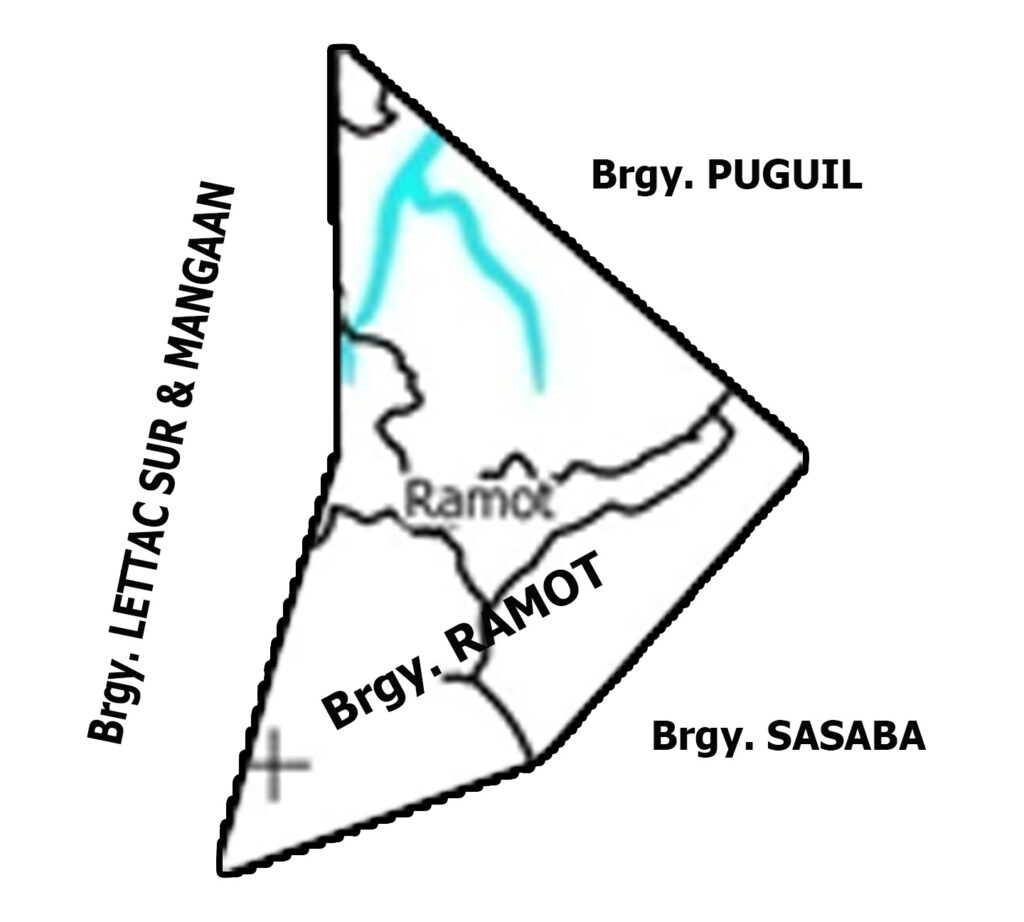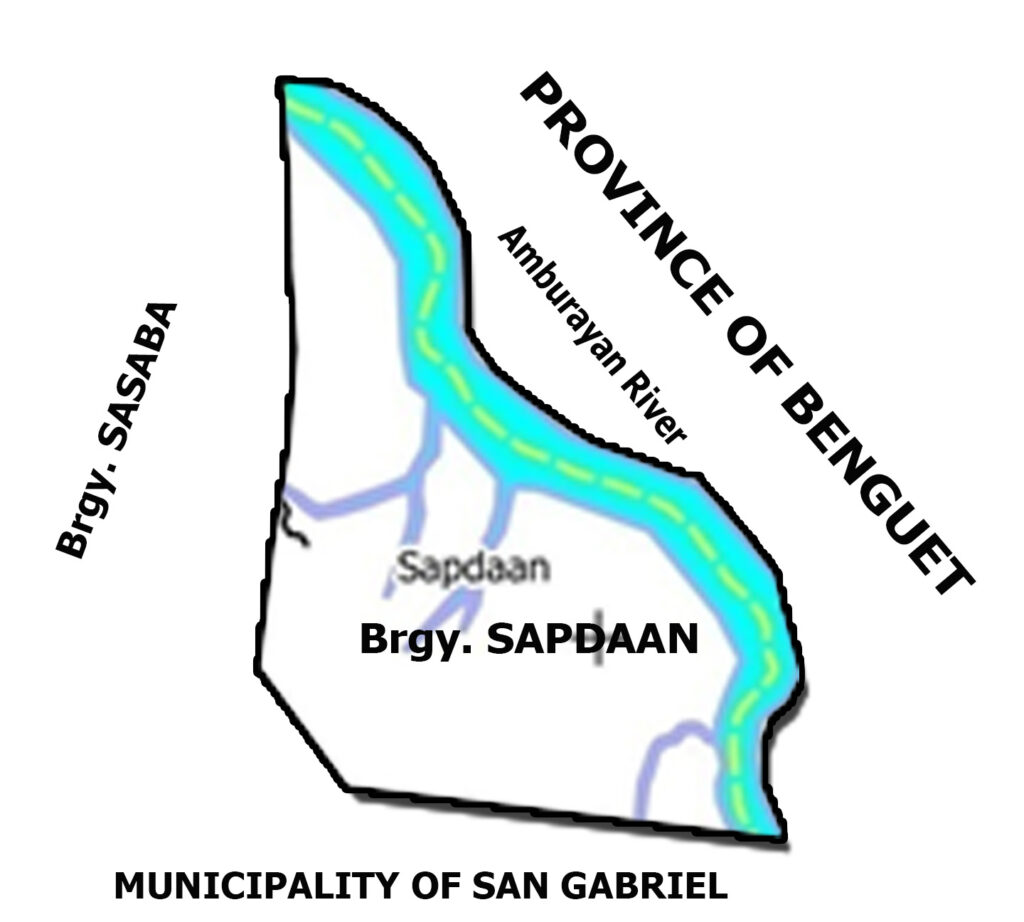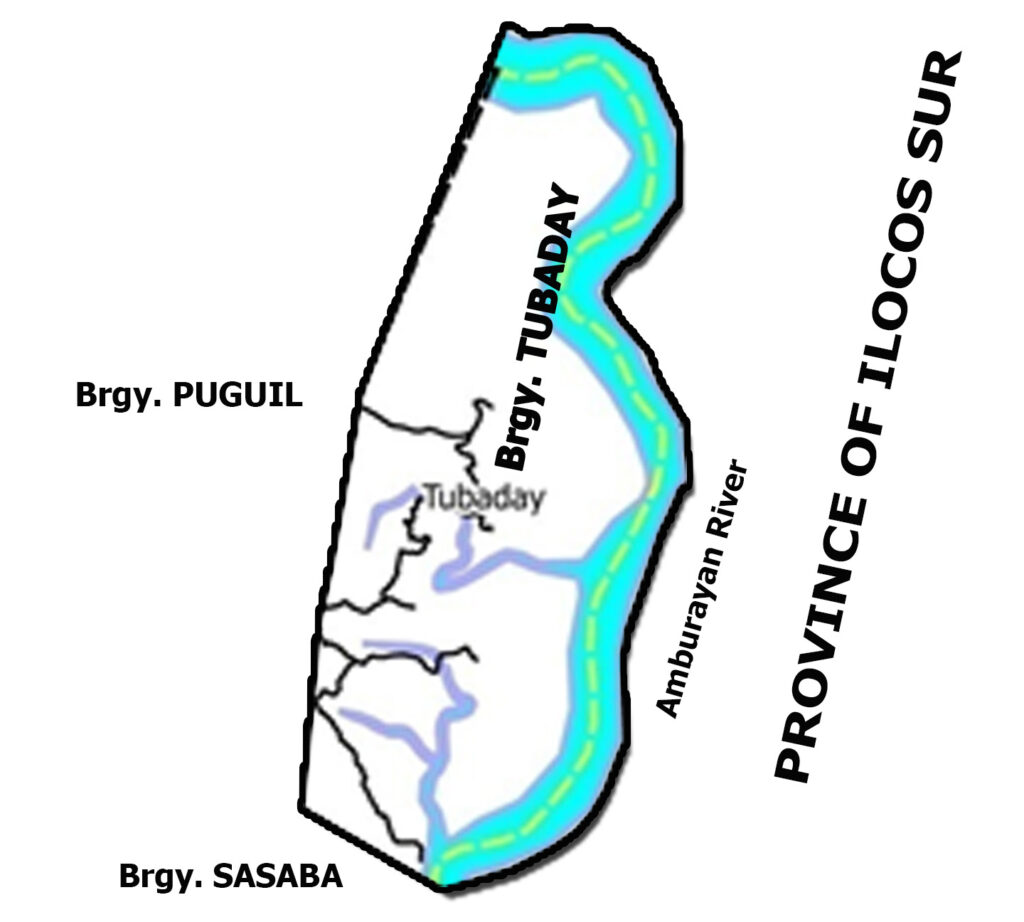CORRO-OY is the biggest barrio of Santol in terms of population with 1,899 residents as of 1995. It lies in the westernmost part of Santol adjacent of Pagleddegan, Balaoan, La Union with eight sitios namely: Ambagat, Killo, Guilong, Pilaoan, Corro-oy Norte, Ciudad and Corro-oy Proper.
Corro-oy means continues erosion or falling movement of earth, sand or particles of rocks. The river beside the present school continue to show this movement and had it not been for the Maluyo River, accumulated eroded particle would have formed mounds to cover the wide river bed.
Killo got its name from the crooked or curved river from bursting spring among rolling hills and thick forest during ancient times. “Killo” means crooked or curved.
Ambagat derived its name of an ancient practice of the people there which is composed of dancing, praying and singing called “Bagat“, hence, Ambagat. The sitio is now inhabited by Christian Filipinos and the “bagat” vanished.
Pilaoan lies east of Killo. The name was taken from the numerous tiny footprints on the soil filled with glistening water-small ponds of water which we call “pilao”, hence Pilaoan.
Long ago, people go out at night and fish with bamboo torches or kerosene lamps in big decorated dried round apo shells. Visitors saw the numerous lights at night and compared them to city lights, hence, that place north of the Maluyo River was called Ciudad.
The brook at the place meets the Maluyo River with a sound o-ong-ong-guilong-guilong hence Guilong.
Nabsang is a human practice which means deep cut. In this sitio, there is now a cut across a high narrow mountain which old people say was made visitors in order to shorten the way.
The present sit Corro-oy Elementary School was once called Moncayo when Santol was still under Mt. Province. A few meters from the school, the first Roman Catholic Church, St. Isidore, was built by Santol and Balaoan residents under the leadership of Fr. Aurelio Morales, a former parish priest of Balaoan, after the people of the Poblacion gave up the idea.
Corro-oy now boast a barangay hall, a plaza complete with basketball court and a barangay health center, 2 day care centers and a police substation/CVO and a vast network for farm to market roads (earthroads).
Punong Barangay
Paterno B. Oriña
Barangay Kagawad
Nenita C. LeddaJoan O. Lopez
Jessie L. Quiñones
Aurelio A. Badua
Josephine O. Tuquero
Edgar C. Oblero
Ophelia D. Valdez
SK Chairman
Ronald Jake O. RodriguezBarangay Secretary
Emyrita E. AlipdaBarangay Treasurer
Ofelia C. BandonilBARANGAY LETTAC NORTE
Lettac Norte is located South of Poblacion across the Maluyo River. It is the twin sister of Lettac Sur from that historic stone in the middle of the Maluyo River breaking into two.
The Barangay is composed of 5 sitios comprising 977 hectares with a population of 821. Sitios include: Cadanglaan, Lipay, Payao, Ragup and Payas. The barangay has no school yet so children have to walk several kilometers to reach Corro-oy Elementary School in Corro-oy and santol Elementartry School at Poblacion.
Cadanglaan was called because of the abundant shrubs in the place called dangla. It is a very powerful cure for dreadful fever called: pasma:. Once there was a sitio called Tarangutong which means a long pile of stone built across often built streams for stopping of water to accumulate for irrigation of for fishing. Officials of Balaoan led the work of putting up dike of lime and stone and succeeded in making a good irrigation project. Sometime, the lace was called “Cavite” but the name Tarangutong Stuck. The place hold the Osias Dam irrigating several hectares or ricefield in Balaoan, La Union.
Also, the sitio Payas we go at its name from its marshy terrain. Others say it because of the deep “paya” or canals constructed by the people as branches of the irrigation system from Tarangutong.
Another interesting place is Lipay whose name was taken from the smooth seeds found in the place used for the common game of the same name.
Ragup means communal ownership. The people seldom work on their own but rather to do it in a manner of “ragup” (as a group), hence, the name Ragup.
There is no official record as to then Lettac Norte was founded but tradition says that is already established even before the Spanish settlement. The original inhabitants are rich non ‐ Christian people.
During the Japanese period, Cadanglaan was made the training center and headquarters of guerrillas. During Japanese hopping operations, houses in nigay wers burned.
At present, a concrete roads lead to Cadanglaan where a barangay hall complete with a basketball court, a day care center, and a barangay clinic are situated. The barangay is a recipient of various community and emergency assistance like the CIDDS. In order to protect the properties along the Maluyo River which had been claiming properties along its river in the river banks, flood control dikes had been established for the past years. With restores peace and order in the area, the barangay hopes to be able to keep abreast with the development its neighbouring barangays.
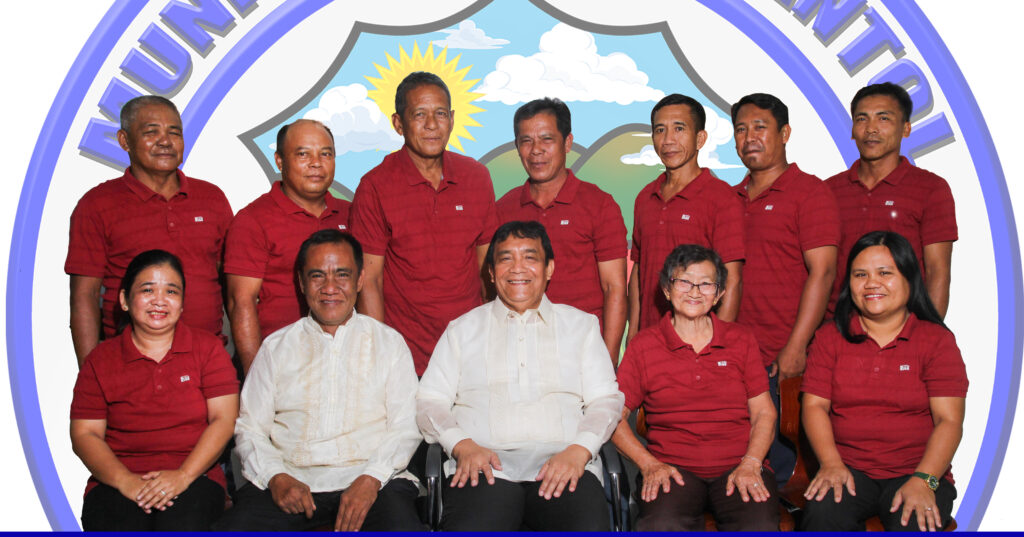
Punong Barangay
Mario R. Directo
Barangay Kagawad
Jaime V. AcostaAlfredo O. Camat
Joselito R. Directo
Arsenio D. Amadeo
Monaliza D. Agtarap
Lito J. Obra
Eleno R. Directo Jr.
SK Chairman
Jomar N. BaduaBarangay Secretary
Marlene D. AcostaBarangay Treasurer
Joseph B. AcostaBARANGAY LETTAC SUR
LETTAC SUR lies about 7 kms. East of the Poblacion comprising an area of 986 hectares spread over its 5 sitios namely: Malanas ( este & proper), Banbanaba, Topinao, Makalakal, Tammogong and Nagoy-oy. As of 1995, total population is 054.
It was established as early as 1086, originally inhabited by igorots. As years passed by, more and more Christians came pushing the igorots up and up. The few who remained intermarried with the Christians. The names tayaw, tibbug, and lalis are remembered as the first who develop the barrio.
Lettac Sur came from the word “bimtac or break“. Years ago, there was a round stone found in the middle of the Maluyo River. Due to the hotness of the sun and too much moisture inside, the stone broke and was nicely devided into two north and south. Lettac was used to “bimtac“, Lettac sur the place south of the stone and Lettac Norte the north side of the stone.
Banbanaba is famous for its “balay Anito” which means house of unseen friends of “Anitos“. It is a very deep water called “ban ‐ aw” about 20 meters deep with side so steep one has to cling to the exposed roots of trees along the precipice in order to get down. It is believed that there is a sirena at the bottom, where the anitos are. Sometimes it roars like an angry lion or vawesfollowed by a great wind. There is the story of a boy who got sick because he thought he saw the sirena with blond hairs sitting on a stone beside the ban ‐ aw. The woman in reality was “Janice”, an American visitor who liked to divide alone at the ban ‐ aw.
Nagoy ‐ oy was sometime depopulated because of Japanese Imperial Forces brutality. The people went away and never returned. It was just recently that people started setting there again. In the local dialect, “nagoy” ‐ oy means something hanging. During the early times, the place was filled with hanging vines, hence, the name Nagoy ‐ oy.
Lettac sur has progressed well since it was established. Roads were opened and continued to be widened and difficult portion concreted. Public buildings like barangay hall, multi ‐ purpose pavement/plaza, health center, day care center are already in place. It is also the first mountain barangay to be installed power supply.
Like Mangaan, Lettac Sur is vital link to the five mountain barangay during summer time when earth roads are passable by vehicles. On the other side, threats of being cut off from the Poblacion.
Punong Barangay
Lito T. Sacpa
Barangay Kagawad
Lita O. GorospeSonia A. Balanon
Esther S. Opinaldo
Winston L. Oriente
Danilo V. Biscarra
Eufraem C. Dicang
Meniano G. Obillo
SK Chairman
Ace A. OrfianoBarangay Secretary
Estrelita L. OpeñaBarangay Treasurer
Eduardo D. BiscarraBARANGAY MANGAAN
ETYMOLOGY:
After the Spanish-American war in a place called Tubeng, 3 Igorot families survived. They moved to a part of Mt. province in a place where at its center stood a big mango tree. From then on, the place Mangaan From that Symbolic mango tree.
Nalis, an old man went hunting in a mountain called “agarbis“. He felt a deer coming and so he shouted to his companion that it has gone to the guiset which literally means, “nagsiketan ti bantay” hence the name of the place guiset. Another story states that before the Spaniards came, guiset was a favorite hunting ground with its thick forest but due to the swift current of the Maluyo River, it was divided into 2, hence the name guiset.
Famous mountains in the place include Bantay Camamba ‐ ey (dwelling place of hawk of an igorot) bantay Immagong (like nose), bantay Bancoc (former dwelling place of an igorot called Bancoc) and the bantay balay udang (dwelling place of people fond of fishing lobsters).
CREATION OF BARANGAY:
Banbanaba is famous for its “balay Anito” which means house of unseen friends of “Anitos“. It is a very deep water called “ban ‐ aw” about 20 meters deep with side so steep one has to cling to the exposed roots of trees along the precipice in order to get down. It is believed that there is a sirena at the bottom, where the anitos are. Sometimes it roars like an angry lion or vawes followed by a great wind. There is the story of a boy who got sick because he thought he saw the sirena with blond hairs sitting on a stone beside the ban ‐ aw. The woman in reality was “Janice“, an American visitor who liked to devide alone at the ban ‐ aw.
Barangay Mangaan is among the first ten barangays of the municipality of Santol when it was classified as regular municipality on apri 30, 1949. This is covered by the executive Order No. 214 of the late President Elpidio Quirino.
GEOGRAPHIC LOCATION:
Mangaan is situated in south central part of the Municipality of Santol. It is bounded on the North by Barangay Poblacion, on the south by Barangay Lettac Sur, on the east by the Barangay Ramot, in the northwest by Barangay Poblacion and in the southwest by Barangay Lettac Sur. It is 2.50 kms. From Barangay Poblacion (town proper), 12.50 kms. From the national highway at the municipality of Balaoan, 42.50 kms. From the city of San Fernando, La Union, 115.50 kms. From Baguio City and 305.50 kms. North of Manila. Please refer to the attached province and municipal maps.
Barangay Mangaan accounts fives puroks/sitios where houses are located namely: Lower Guiset, Upper Guiset, Pacpaco, and Pidpid. This is shown in the barangay map or moist equatorial air in China Sea, the month of May to October have abundant rainfull, the maximum occurring in August.
The average rainfall is 467.15 millimetres with 95 percent falling the month of May to October (wet season) and 5 percent during November to April (dry season). The maximum monthly rainfall during the month of August is 1,589.90 mm and minimum of 6.90 mm during the month of May. Temperature variation by locality within the municipality is very slight and negligible. The eastern mountainous barangays are a bit cooler than western barangays, an effect of elevation and vegetation. However, seasonal temperature variation by month could be considerably felt. January is the coolest month at 23.0 c average monthly temperature while is the hottest at 27.2 C average temperature is 24.26 C.
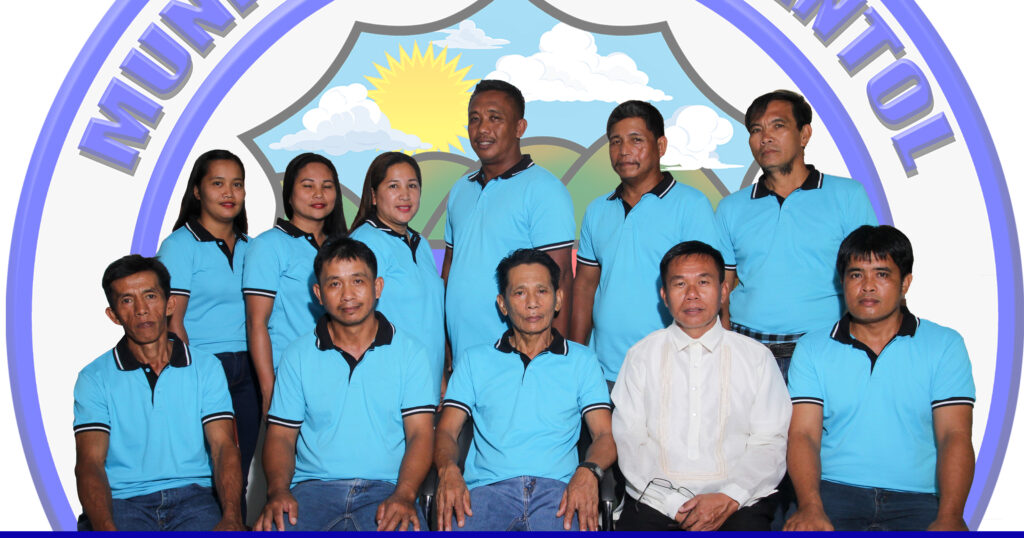
Punong Barangay
Benny L. Arellano
Barangay Kagawad
Edmund N. BaduaSixto A. Tawac
Eddie E. Gamotlong
Rizalde O. Obaldo
Carmela D. Lapitan
Marcos D. Pal-Iwen
Junie T. Flores
SK Chairman
Jett O. CastilloBarangay Secretary
Ma. Khisha C. DonglosBarangay Treasurer
Merle A. ObaldoBARANGAY PAAGAN
Pagan is inhabited by Ilocano pioneers who had survived adverse circumstances by the name Paaganhas never been changed who origin never traces. With its panoramic view, climatic conditions and geographical location with natural land and water forms, it is one of the most progressive parts of the municipality. It has a total population of 1,255 with a total area of 903 hectares. It is divided into 6 sitiosnamely: Capalispisan, Bilogan, Sammaoteng, Paagan weste, Cadaoeran. The Southern part of the Barangay called Ticub was once a settlement by was abundant due to difficult natural bariers and scarcity of water.
Bilogan got its name from the word “bilog” or boat. It is told by old men that the place was a favourite source of trees for making “bilog” and it was also the source of the biggest boat ever made, so the history goes.
Capalispisan was formerly called Catayagan due to its high location. It was originally a wilderness and a part of Mt. Province. In 1920, it became a part of Santol. Original inhabitants were igorots but in 1930, there were more Christian people in the place than igorots until now. According to old men, a gareta was built here to keep watch at the constant invasion of robbers.
Sammaoteng got its name from the many birds called sammauteng that inhabited the place a settlement was already in place even before Spanish occupation. It was the hiding place of Captain Leon Agtarap during the Japanese occupation.
Today, Paagan is picture of progress and development. The barangay has a barangay hall, in front of which a multi is – purpose pavement complete with a stage and a basketball affairs are conducted. At the center of the barangay is the Paagan Elementary school and further west is the St. Mary’s Parish church constructed in 1971 by Mr. and Mrs. Bartolome Napenas. A day care center is also being conducted at the church whose earlier teachers were nuns. Also, the barangay is widely known for its very successful Multi – Purpose Cooperative whose services include a retail store and a credit business. The cooperative was made possible under the DAR;s rural program.
The cleanliness, peacefulness and progress of the barangay could be attributed to the strong sense of responsibility, cooperation and oneness of all barangay residents, both young and old.

Punong Barangay
Eladio O. Olay
Barangay Kagawad
Flora O. LeddaTeodora O. Ledda
Ferdinand T. Valdez
Virgilio O. Valdez
Josephine O. Tuquero
Edgar C. Oblero
Daniel O. Oña
Nestor G. Valdez
Bernardo G. Medina
SK Chairman
Donna Belle V. OyandoBarangay Secretary
Ann Grechelle O. RagilBarangay Treasurer
Anita O. RagilBARANGAY POBLACION
Barangay Poblacion is one of the 11 barangays of the Municipality of Santol. It has a land area of 936 hectares. It has a land area f 936 hectares. It has a population of 1,666 belonging to 385 households. The barangay is composed of 5 sitios namely: Padayao, Central, Lettac, Cabaroan and Central East.
Tradition says that the most recognized and well-known old man named Francisco lived in Lettac. He owns almost the entire area covering the Poblacion. From him, PADAYAO, now called Poblacion was established. Padayao, shortened word for “pammadayaw was given to the first new Christian Tribes who settled in Santol.
As of 2016, total population is 1,630 of diversified origins and culture. The barangay covered an area of 936 hectares which is divided into 5 sitios namely Padayao, Central, Lettac, Cabaroan and Central East.
POBLACION CENTRAL came to be known by the groupings made in certain activities. The part of the origins Padayao east of the Presidencia is what is now called Central. Father east is Nammutingan which the youth often times refer to as Central East. In that place, there is smaller brook that cut or “namursing” into into bigger brook. The place was the “Namursingan” of the smaller brook, hence the name “Namutingan”. Original settlers there immigrated to other places, specially, Mindanao.
BUACAO got its name from the Buacao plants planted by the early inhabitants. Beside it is sitio Lettac which came from the local work “lettac” which means cracks or breakage. It is believed that a great earthquake came to the place and caused a lot of cracks and breaks on the land.
North of Padayao, where the Municipal Cemetery is located llies Manngunay. A place named after the pagan names of the first couple who setteled three-Manganop and Gunaya. After their death in 1890, a Bago tribe settled there named the place MANGGUNAY.
At present, Poblacion is the center of the town. The presidencia Municipal Plaza, Municipal Market. Trading Post, 3-storey Santol Police Station, a 10 bed Community Hospital, and the People’s Park are under construction by the Municipal Government which is expected to boost the development of the barangay and the municipal as well.
The Tree Park and Pavillion stragically located 200-meters away from the town proper. It was designed to hold 2,001 trees of different sort and varieties upon completion. And if you happen to come and yearn for a communion with God (and nature), the tree Park Pavillion can also cater spiritual gathering and activities. Guest rooms and dormitories will be available soon for those who opt to stay (comfortably) and others may opt-to set up camps to enjoy the scenery and view the vast skies.
The barangay hall is located beside the Public Market along the Provincial Road. To serve agricultural and social gatherings purposes, multi-purpose pavements are located in the different sitios complete with a basketball court. There is also a significant increase in residential development and construction in the area.
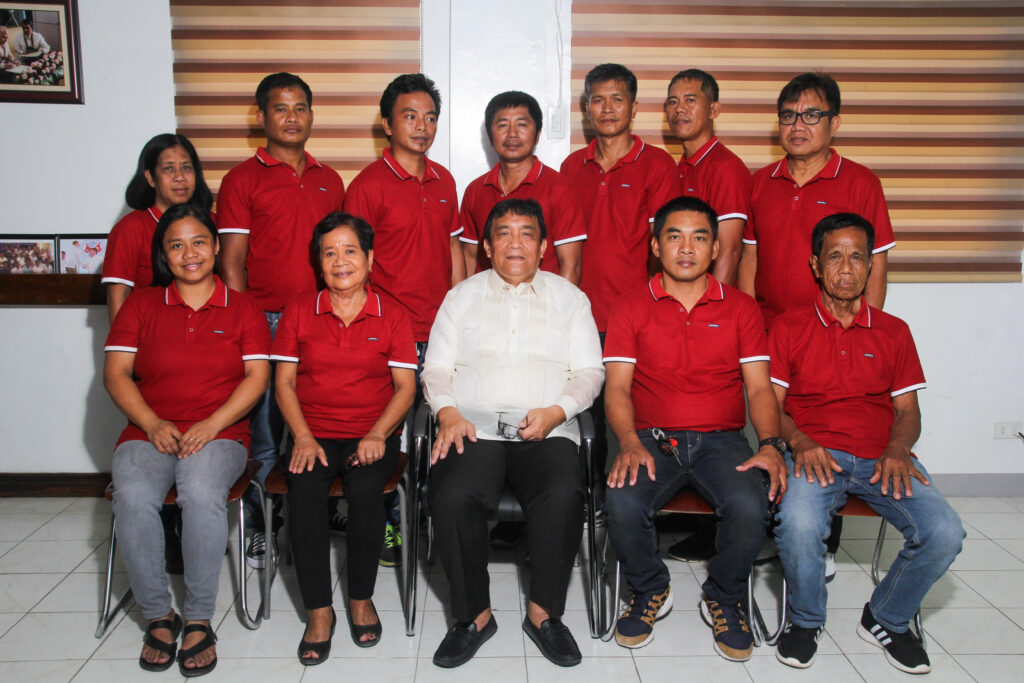
Punong Barangay
Arolanston F. Navaera
Barangay Kagawad
Eduardo L. OrienteNestor O. Ordoño
Corazon O. Arellano
Wilson O. Oriente
Rey D. Gonzalo
Arnel D. Laureta
Opremiano O. Bautista
SK Chairman
Rahna N. OrienteBarangay Secretary
Fely O. NavaeraBarangay Treasurer
Jannet P. ArellanoBARANGAY PUGUIL
The barangay lies some 15 kms. From the Poblacion. It could be reached by foot through the Pacpaco. Ticab or Bilagan routes. It is the largest barangay of the town in terms of land area comprising 11 sitios. Its sitios include Bago, Binatadan, Tarungan, Bilagan, Deccan, Liguay, Maggew, Bangkudo, Nayba, Tayyan, and Taquilong.
Liguay, the barangay proper got its name from a tree that grows in the place called “diguay“. It is also told that during the Spanish-American war, an American named the place “Big Way Barrio”. It was during the American occupation that a school was opened and was Biguay. In its early history, a Captain ruled who chose 10 old men to set as law making body. As its population grew, sitios were named with the approval of the peple in the group and Biguay was changed to Liguay.
Bilagan is the northernmost sitio and is 4 kms. From the Poblacion it means “drying place”. Nears near the place is niog which was named because of a tall coconut tree that stood in the middle of the place but did never bore fruit. From then on, upon the order of an old man, the people did not plant coconut tree. Deccan sits higher than they other sitio of the barangay. Deccan is a tree that bears sweet fruit tasting like chicos. It’s old though that the fruit appears on the trunk of the tree. Likewise, Maggew got its name from the tree abundant in a place by they same name. Another sitio called Pacda was ruled by a very loving, kind leader named Pacada. He was wel‐loved by the people. When he died, the people called the place Pacda is hics honor.
When katipuneros reached this place, the people, were converted to Christianity. They called the place “bago” which means new Christians as the place then were inhabited by new Christians. Taquilong, the first sitio from the south was named during the Spanish period when Spaniard saw what the people are doing there, in the middle of the place was a big hallow wood for pounding rice. Taquilong means pounding palay.
Today Puguil is one of the progressive barangay among the mountain barangay in the municipality. Almost all sitios are connected by earth roads passable during summer season. In Liguay lies to complete elementary school, a day care center, a barangay hall with a newly constructed multipurpose pavement often used for dying and a venue of basketball games. Beautiful spots in the place include the “swimming pool” and “lipit” in Bilagan (beautiful deep bodies of water good for picnics) and the burial cave at Maggew.
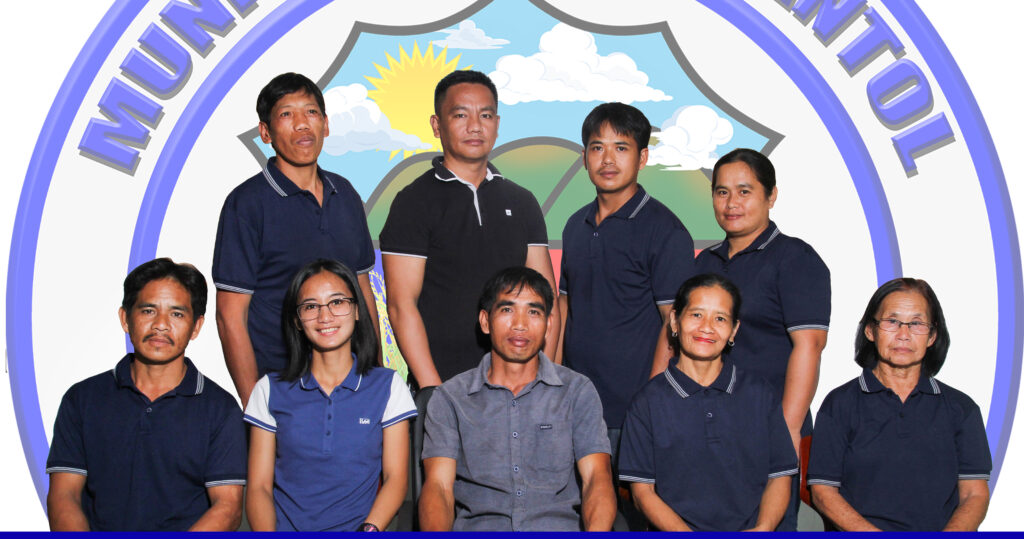
Punong Barangay
Nolie A. Laigo
Barangay Kagawad
Cleofe S. AlfonsoEva A. Capaoay
Ricardo B. Tagaban
Rolly S. Ordanza
Doming Q. Castro
Tomas B. Martin
Randy T. Dangle
SK Chairman
Ramel M. SongduanBarangay Secretary
Nevagine CamilotBarangay Treasurer
Cherrylou F. DawayenBARANGAY RAMOT
Long ago, the place was a jungle. Big and tall trees thrived with big roots and long roots artistically interfaced above the ground, hence the name “Ramot” which means roots.
There were for original families as settlers when it was established in 1908. Now now it has a total population of 635 with five sitios spread in 975 hectares area. Sitios include Laya Balay Udang, Ramot Proper, Cambal and Litang.
Once a popular settlement, but has now vanished, the place called Natingnin was generally cool throughout the year specially at night. Mosquitoes thrived at the place and people always get sick because of malaria. Those survive left the place. The same hold is true with Ticon. Small red birds, the size of the foot thumb that sings a very high note other birds could not follow abound the place. They are believed to be harbingers of sickness. Once it enters a house, the family lives dies.
At present, Ramot have a multi-grade and incomplete primary school (grade 1 and two only) and have 1 teacher, a barangay hall with a multipurpose pavement, a day care center and a barangay health clinic.
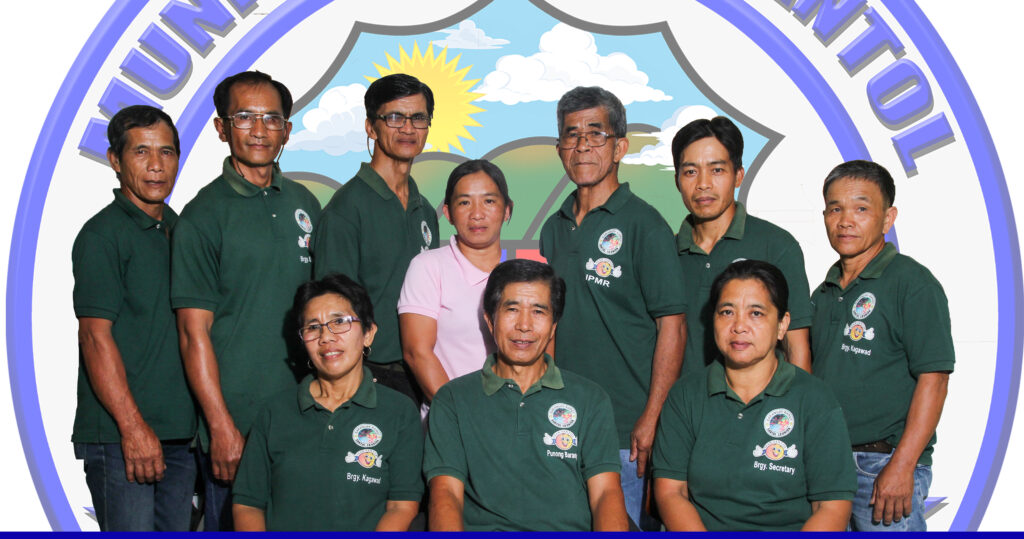
Punong Barangay
Aniceto C. Esteban
Barangay Kagawad
Colas S. BudoySammy J. Alfonso
Reynaldo J. Simon
Myrna P. Paing
Jose O. Cario
Mateo C. Dum-Ayan Jr.
Jun G. Luis
SK Chairman
Mike L. BondotBarangay Secretary
Rosemarie G. UyaBarangay Treasurer
Rowena V. LigaoenBARANGAY SAPDAAN
Sapdaan was formerly a sitio of Sasaba which became a regular barangay in 1972. “Sapda” means to land. In the place, a wide river is the principal landing place of fished from small rivers hence the name “Sapdaan“.
The barangay is so high, visitors often say that once you are there, you only need a 2.50 peso fare and it’s “langit” or heaven. The place is cold like Baguio City and fogs could be seen enveloping the area specially at dawn and in the afternoon. Due to its steep and rocky terrain, no vehicles could enter the place and is only reached by poor from barangay Sasaba. It has a total population of sharing a 1,206 hectares spread 5 sitios named: Sapdaan Proper, Ballat, Saep, Mangga and Sagingsing.
Due to its great distance, only a few of the residents narrowed down to the barangay officials and the younger ones go down for their needs at the Poblacion.
At present, a primary school and a day care center serve the educational needs of the residents. They also have a barangay hall where barangay affairs are conducted.
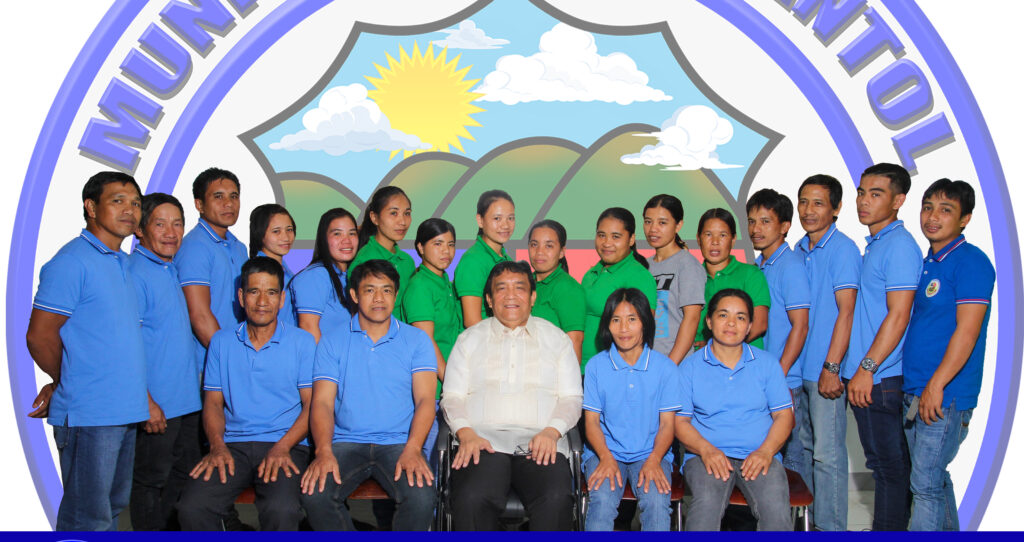
Punong Barangay
Francisco D. Banasan
Barangay Kagawad
Ana A. BendozanNomer T. Sacpa
Ben C. Taima
Domingo S. Cosep
Ronaldo A. Lunes
Benita A. Buyaan
Ricardo D. Sacla
SK Chairman
Maryrose A. KalengBarangay Secretary
Daryl CosepBarangay Treasurer
Divino B. TaimaBARANGAY SASABA
Barangay Sasaba is bounded on the south by San Gabriel. It is next to Puguil in terms of land area at 1,238 hectares with 6 sitios namely: Bay‐o, Tico, Bacayawan, Gambang, Potrido and Tebac.
The barangay could be reached by vehicles through the Poblacion- Ramot-Sasaba road or via Lon‐oy, San Gabriel during summer time. During rainy season, people carry their products to the Poblacion on foot through the Kamamba‐ey Route.
Sasaba was so called due to the abundant banana fruits in the place. Sitio Bay‐o, the uppermost barangay and the gateway to the next barangay, Sapdaan, came from the two big mountains between it which form like a mortar.
Gaoagao, Bacayawan, Tebac were organized as sitio during the Spanish Rule under Mt. Province. In 1920, these sitios became part of La Union under San Gabriel. Later the boundaries of Santol were extended to include these when it became a municipal district.
Tico means something that is divided in the local dialect. Once it was a wilderness conducive for hunting but Kaingin divided the wilderness into small forests, hence the name Tico from present state of barren hills and mountains in the area.
In the 1930’s, Christians began settling in Sitio Gambang. It was the residence of blacksmith famous for collecting cans. Whenever he go, he gathers cans which people called “gambang“. Whenever people go to the place, they gave him “gambang” and from his death, the name remains until now. At sitio Manabong, negritos became the first settlers but they did not build their shelter.

Punong Barangay
Paciano A. Libuten
Barangay Kagawad
Victoria L. SegundoBonnie D. Cogaed
Sammy T. Camid
Nardo P. Patricio Sr.
Teodoro C. Lalpoot
Jimmy G. Mateo
Orlando D. Lapeña
SK Chairman
Jayson A. Tad-oBarangay Secretary
Ernesto A. AstodilloBarangay Treasurer
Maria Consolacion G. MarianoBARANGAY TUBADAY
Barangay Tubaday was established in 1815. It lies in the northeastern part of Santol. The first inhabitants were eata negritos and now igorots. It was a restrict practice of the residents to obey their head or else suffer a serve punishment.
The first seat of government was established at Tubaday proper with Licay Camilot as the President. After the Spanish American War, the presedencia was transferred at Padayao which is now called Poblacion.
Barangay Tubaday lies 18 kms. From the Poblacion and is reached by vehicles during summer time. It has 7 sitios covering an area of 1,032 hectares shared by 596 residents. The sitios include Batang, Tubaday Proper, Inasan, Pisnadan, Pacawan and Manaba.
At present, there is a primary school at Pisnadan and Tubaday Proper. The barangay hall is situated at Sitio Pisnadan with multipurpose pavement which is often used for barangay affairs. It has a barangay hall branch at Tubaday proper. A day care center also serve the educational needs of the younger kids.
Inasan is a beautiful place for those who are interested in hiking and picnics. The descending path gives perfect view of the wide Amburayan River in contrast with the lush greenery of the surrounding.
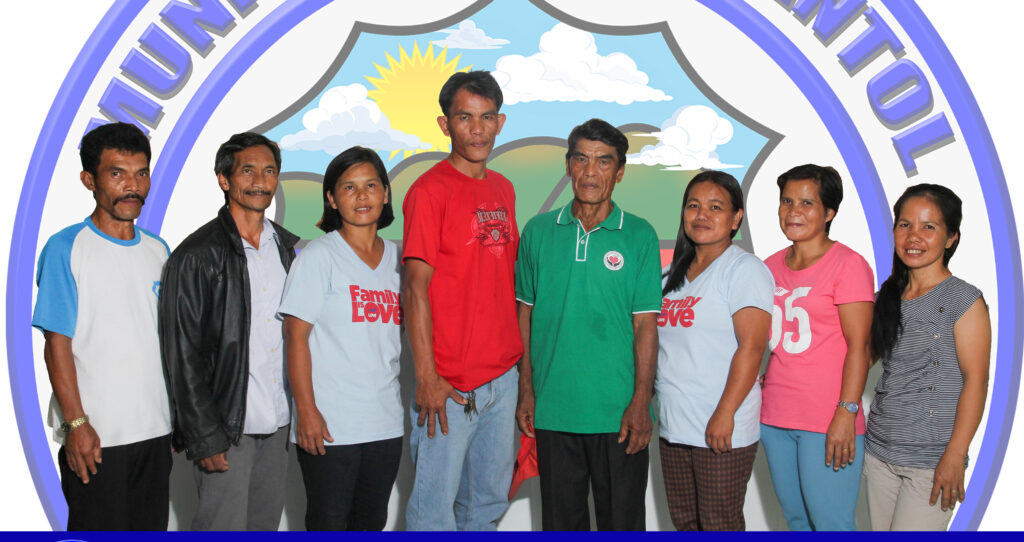
Punong Barangay
Alfredo J. Apio-en
Barangay Kagawad
Johnny S. SadaoAlito J. Jose
Fred T. Subli
Melindo J. Baludda
Feliciano A. Sadaken
Labasen L. Batanes
ODanny A. Diw-ayan
